1 Nov 2022
Ellen Marcinkiewicz marks 10 years of work from International Cat Care and partners prioritising cat well-being in practice.

A separate consult room for cats? A different waiting area for cats? In 2022, these are no longer novel ideas – and for the team at the charity International Cat Care (iCatCare), that’s great news.
With incredible progress in the field of feline medicine, it’s almost hard to believe that it’s only been 10 years since the launch of the ground-breaking Cat Friendly Clinic (CFC) programme, which would pave the way for the profession to prioritise feline well-being in practice.
The International Society of Feline Medicine (ISFM; iCatCare’s veterinary division) CFC programme was designed with a cat’s unique nature and needs at its core to reduce stress at every stage of the veterinary experience. By supporting cats, their owners and the veterinary team, feline patients can receive a higher standard of veterinary care.
Today, the term “cat friendly” has become mainstream, thanks to support from like-minded advocates, veterinary groups, sponsors and partners that have amplified the message on a global scale. With such progress and collaboration, the 10-year milestone became a key opportunity for the charity to review and reflect.
As a result, two new guidelines – Cat Friendly Veterinary Interactions and Cat Friendly Veterinary Environment – will be available open access in the November special edition of the Journal of Feline Medicine and Surgery (JFMS).
In celebration of the 10th anniversary of the CFC programme, iCatCare has looked back on the origins of the scheme and its evolution into the accreditation programme we know today, and explored what the next 10 years may bring. During a routine meeting back in the early 2000s, iCatCare (then the Feline Advisory Bureau) posed the question to the feline vets funded by the charity: “What could we do to most improve the veterinary care of cats?”
The vets in attendance were both experienced in the field of feline medicine and behaviour, and passionate about cats. Supported by the charity, they had undergone research, treated feline referral cases, presented lectures, and ultimately, raised the knowledge and awareness of feline medicine within the UK and internationally. Expecting them to focus on a hot topic in feline medicine, such as renal disease, the team at iCatCare received a unanimous answer that would change everything.
Sam Taylor, feline medicine specialist and International Society of Feline Medicine Academy lead, said: “The group had all noticed how much happier cats were when handled gently and calmly, and kept away from dogs… and how scruffing and heavy handling resulted in stress at the time and at future visits.”
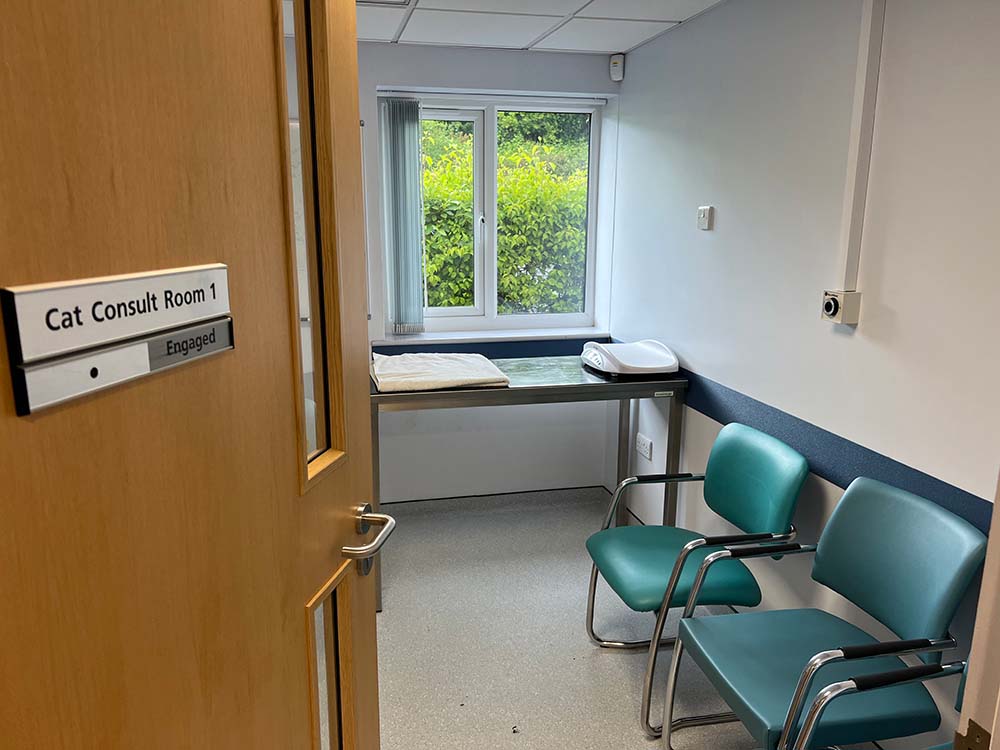
Instead, the group of vets felt that a better understanding of the needs of cats was key to improving their health and welfare – in particular, reducing stress in the veterinary environment and gentle, compassionate handling techniques.
The knock-on effects would increase clinical success, such as obtaining more accurate vital parameters, improving recovery time and reducing inappetence in hospital. It would also mean that owners would be more likely to present their cats for routine examination and preventive health care appointments, resulting in the earlier identification and treatment of disease.
And so, 10 bullet points were jotted down on a piece of paper and the term “cat-friendly practice” was born.
These bullet points would later become the foundations for the ISFM’s CFC, which was also adopted by the American Association of Feline Practitioners (AAFP) as the Cat Friendly Practice (CFP) programme in North America and South America. But first, a competition was held in the UK to share practical tips and ideas among veterinary professionals working with cats. iCatCare developed a small booklet of ideas with a group of feline experts from around the world and invited vets, nurses and practices to send in their contributions.
Over two years, the winners were celebrated at events in London, and received certificates and logos that could be displayed in their practices. This led to demand from other veterinary professionals who also wanted to show clients they were cat friendly.
The creation of the ISFM CFC programme, supported by Purina, was the logical next step to improve the experiences of cats within the veterinary clinic environment on a wider scale. Ideas obtained through the competition would then become the foundation for gold and silver-level accreditation.
However, iCatCare’s vision to improve the lives of cats was always intended for a global audience and partnership with another veterinary organisation with the same goals would be key. The ISFM had already partnered with the AAFP on initiatives such as the JFMS, and the programme was licensed in the Americas as CFP (originally supported by Ceva, Hill’s Pet Nutrition and Pfizer, now Zoetis). Both programmes launched officially in 2012 and would go on to change the future of feline medicine.
This year marks the 10th anniversary of CFC/CFP, and both organisations are celebrating the achievements of the revolutionary programmes.
The term “cat friendly” is now considered mainstream within the profession and has led to adaptations to other species, such as rabbit and dog-friendly clinic programmes.
Over the past 10 years, more than 2,500 CFCs have been accredited across 47 countries, including the first CFCs in Russia, Vietnam, South Africa and the Philippines, which were welcomed earlier this year. More than 1,000 clinics have also been accredited in 10 countries through the AAFP CFP programme since 2012.
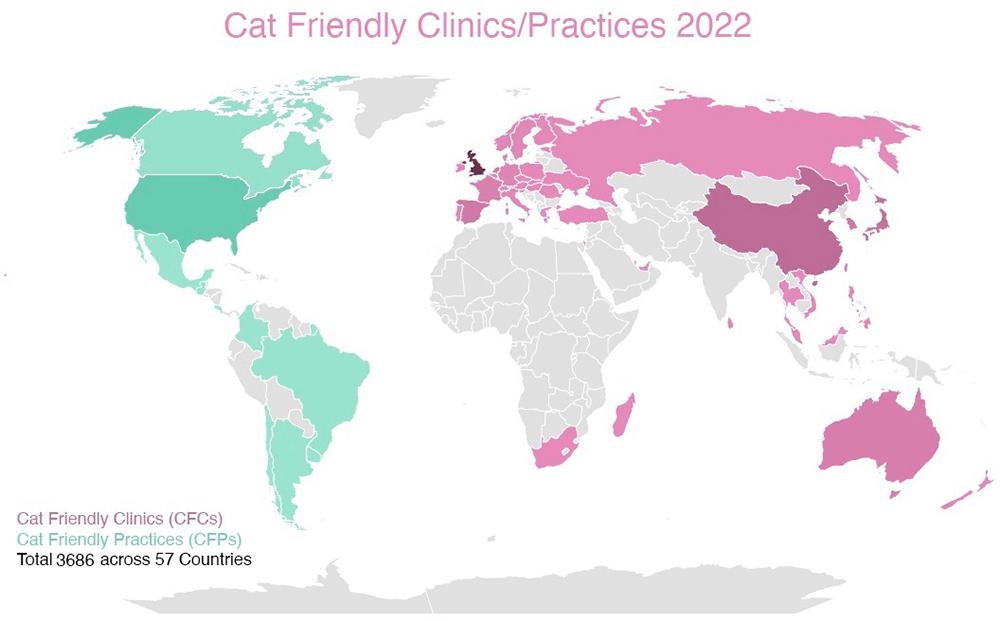
To showcase the accomplishments that accredited CFCs have achieved and honour the programme’s beginnings, the ISFM decided to hold another competition as part of the 10-year anniversary celebrations. At the end of 2021, CFCs were asked to submit a short video of an innovative change they had implemented to make their clinic a better place for cats to visit. The change could be procedural (improving the way they work with cats) or a physical change to the clinic.
The competition reinforced that at the heart of the CFC programme is the opportunity to assist a practice in implementing simple changes to create a better experience for every cat. This includes reducing stress during the visit, as well as understanding and assessing the environment from the cat’s point of view. All cats should benefit from a cat-friendly environment, cat-friendly interactions and a cat-friendly experience.
The vision for the ISFM is that the programme continues to experience exponential growth over the next 10 years and that cat owners seek out a clinic that provides a low-stress, feline-centric veterinary experience. Building on the progress that has been made over the past 10 years, new Cat Friendly Principles for Veterinary Professionals and Cat Friendly Guidelines have been developed.
It is hoped that all veterinary professionals working with cats adopt these principles in practice.
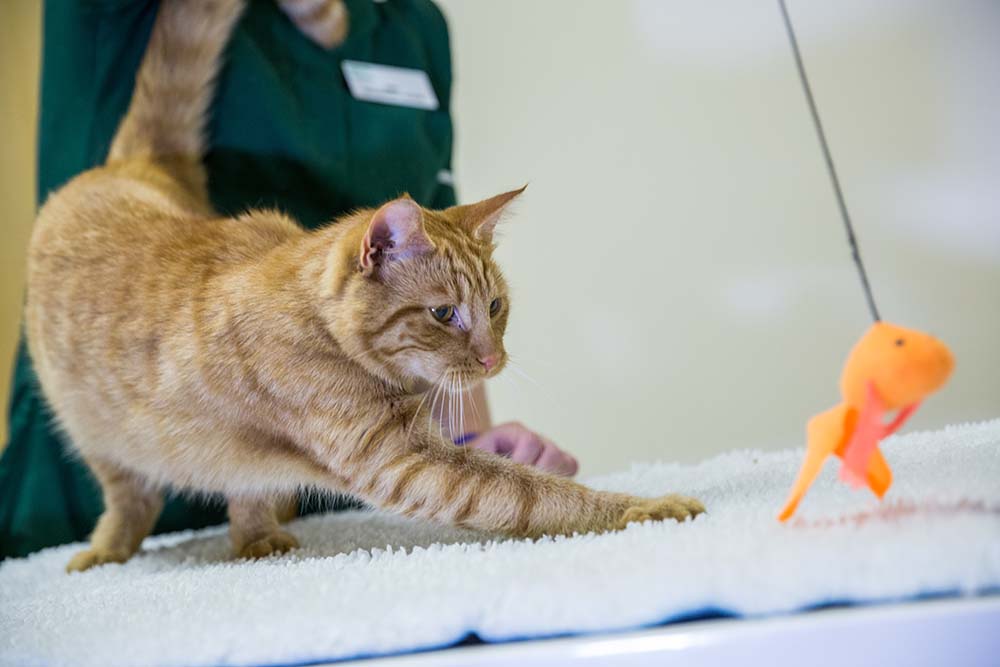
On creating the new guidelines, head of the ISFM Nathalie Dowgray said: “We are extremely proud of our new guidelines; they have been a lot of hard work with large amounts of literature to review and multiple time zones to work across, but the effort has been worth it.
“We hope all veterinarians working with cats will take the time to read them, and apply the concepts and ideas to their clinics, and to how they personally interact with their feline patients.”
Other priorities for the future will focus on developing “cattitude” within the practice by providing ongoing education to improve the cat-friendly skills and understanding of the entire veterinary team.
CFCs will also receive improved resources and promotional tools to demonstrate their cat-friendly status to clients. The CFC programme is also undergoing updates to accreditation criteria, and improvements to make the application and renewal process more streamlined and user-friendly.
The ultimate aim is to see all clinics and veterinary professionals working in a cat-friendly manner for the benefit of cats, their caregivers and the veterinary team.
Although many inspiring entries were made, the winner of the physical change category was Orchid Vets for its cat-only floor, which demonstrated the changes that could be made to a clinic to make it more cat friendly without undergoing major renovation work. Niki Pullen, who submitted the clinic’s entry, said: “Winning shows us it was worth it. But even if we hadn’t won, the evidence it was worth it shows in our clients and our patients.
“Since we have implemented these changes, the (previously protective) cats are letting us examine them. Those practices thinking about becoming cat friendly, but think it’s a lot of effort – no, it is so worth it.”
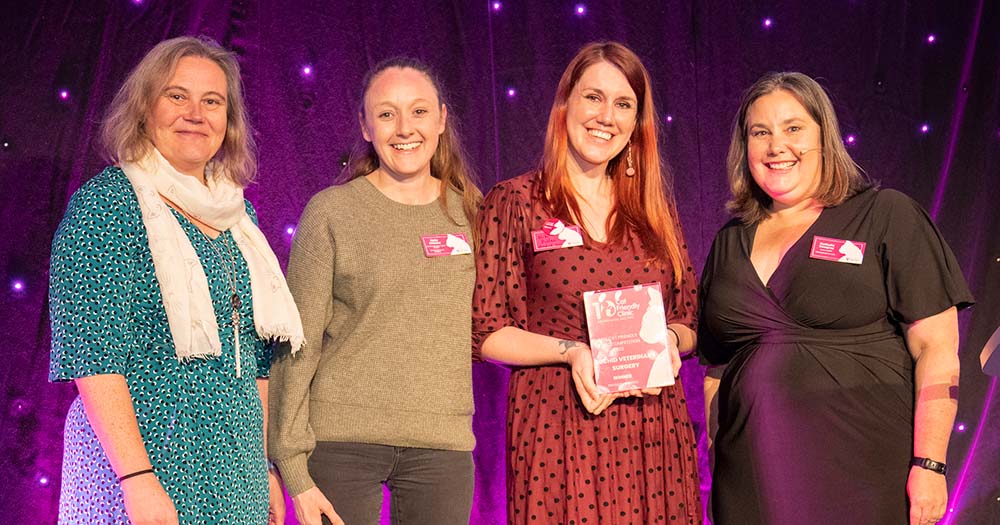
The winner of the procedural category was DAP De Witte Raaf for the use of the lick mat as a distraction technique. The team said: “Winning the competition is the icing on the cake for our efforts to make our clinic as stress-free as possible for our feline friends. It’s the ideal incentive to keep searching for ways to improve our cat-friendly approach.”
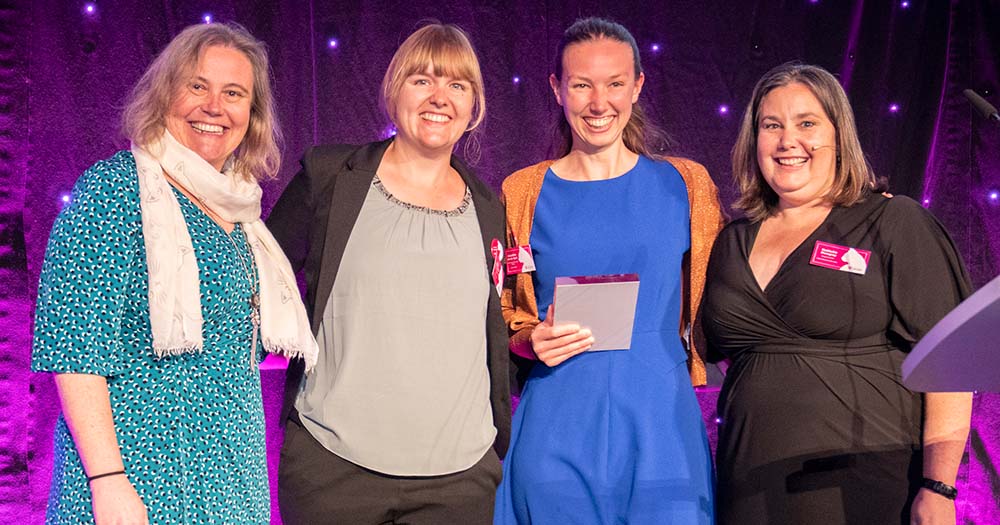
To view the successful entries, visit https://catfriendlyclinic.org/10yrs